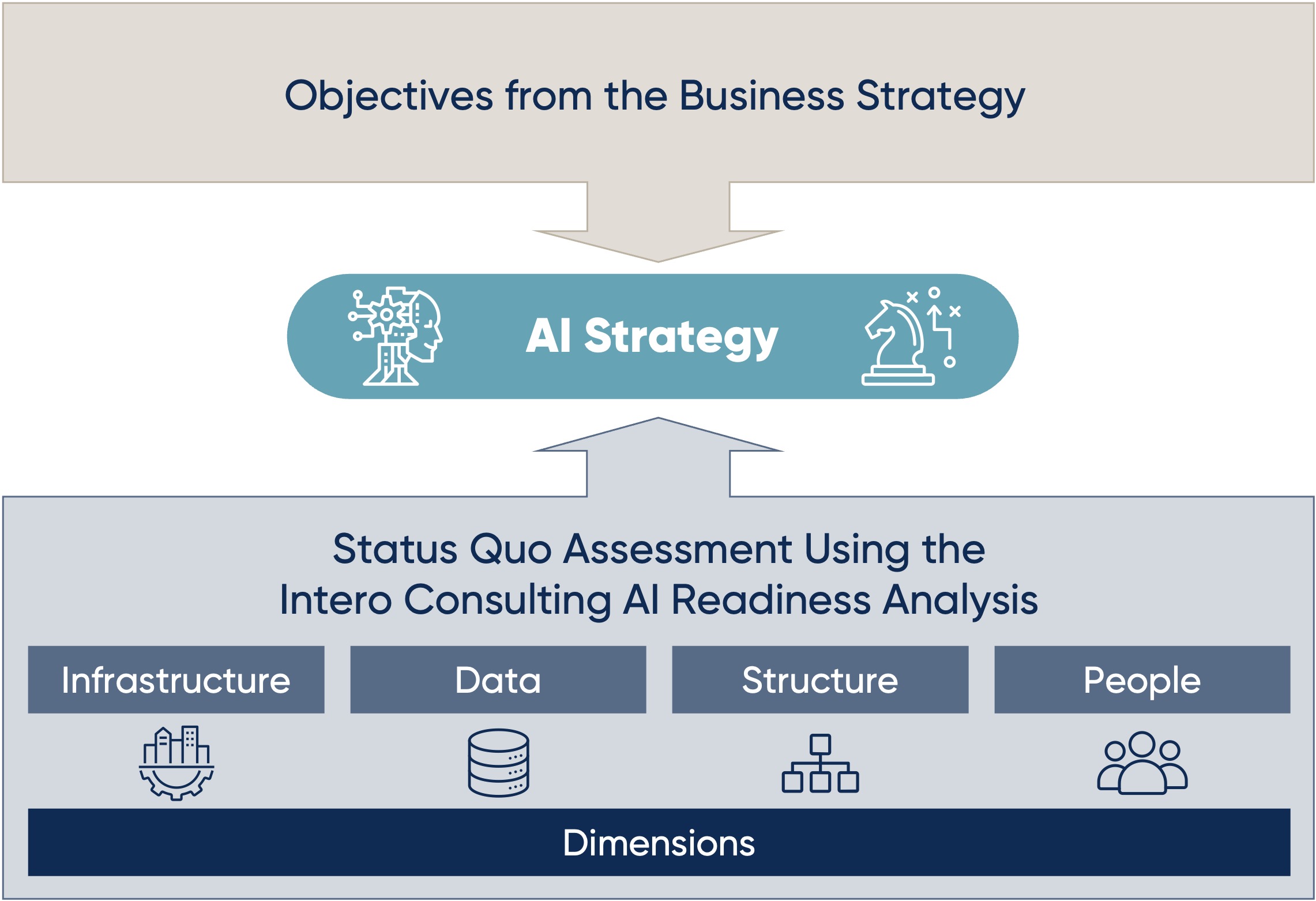In an era where artificial intelligence is revolutionizing business models, companies have a lot at stake. The difference between digital pioneers and laggards is increasingly decided by the question: Do you have a well-thought-out AI strategy that is implemented in relevant areas? According to Goldman Sachs, the use of AI enables productivity increases of 25 percent on average. But how can companies systematically unlock this potential?
The answer lies in an AI strategy that is systematically derived from the business strategy and defines concrete framework parameters for all affected business areas.
The Four Dimensions of a Successful AI Strategy
A successful AI strategy requires consideration of four central dimensions:




![[Translate to English:]](/fileadmin/_processed_/3/7/csm_2025-03-21-PORTRAIT-Goeppel-Nadine_6d11904ac0.jpg)
![[Translate to English:]](/fileadmin/_processed_/c/6/csm_2025-03-21-PORTRAIT-Bernegg-Lukas_fc4ea9defa.jpg)






















